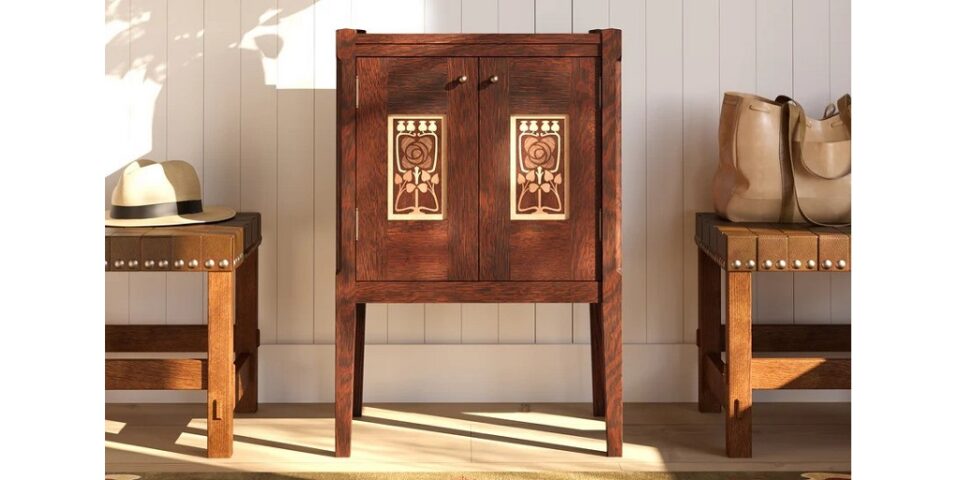Arts and Crafts style furniture is renowned for its simplicity, craftsmanship, and emphasis on natural materials.
Originating in the late 19th century as a reaction against the mass-produced, ornate furnishings of the Victorian era, Arts and Crafts furniture embodies the principles of the Arts and Crafts movement, which sought to celebrate the beauty of handmade craftsmanship and promote a return to simplicity and honesty in design. Here is what defines this classic furniture style.
Emphasis on Handcrafted Construction:
At the heart of Arts and Crafts style furniture is the emphasis on handcrafted construction techniques. Each piece is meticulously crafted by skilled artisans using traditional woodworking methods, such as joinery, hand carving, and dovetailing. This dedication to craftsmanship ensures that each piece is unique and showcases the individuality and skill of the maker.
Simple and Functional Design:
Arts and Crafts furniture is characterized by its simple, unadorned design and focus on functionality. Inspired by the principles of utility and practicality, Arts and Crafts designers sought to create furniture that was both beautiful and useful. Clean lines, straight edges, and geometric shapes are common features of Arts and Crafts furniture, reflecting a commitment to honesty and clarity in design.
Use of Natural Materials:
Natural materials such as wood, leather, and metal are hallmarks of Arts and Crafts style furniture. Oak, cherry, mahogany, and walnut are commonly used woods, prized for their durability, grain patterns, and rich color variations. Leather upholstery and metal hardware add texture and contrast to the natural warmth of wood, creating a harmonious and inviting aesthetic.
Exposed Joinery and Craftsmanship Details:
Arts and Crafts furniture often features exposed joinery and craftsmanship details that highlight the construction methods and materials used in its making. Mortise and tenon joints, dovetail joints, and through-tenons are frequently visible, showcasing the strength and integrity of the furniture’s construction.
Hand-carved details, such as chamfered edges, pegged joints, and hammered metal hardware, further emphasize the artisanal quality of Arts and Crafts furniture.
Subdued Color Palette:
The color palette of Arts and Crafts style furniture tends to be subdued and earthy, reflecting the natural beauty of the materials used. Warm tones such as browns, tans, and deep reds predominate, with occasional accents of green, blue, or gold. The focus is on creating a sense of warmth, comfort, and harmony within the home environment.
Timeless Appeal and Versatility:
Arts and Crafts style furniture has a timeless appeal that transcends trends and fads, making it a versatile choice for a variety of interior settings. Whether in a traditional Craftsman bungalow, a modern loft apartment, or a rustic farmhouse, Arts and Crafts furniture adds warmth, character, and sophistication to any space. Its clean lines and simple elegance make it easy to incorporate into both classic and contemporary decor styles.
The Best Arts and Crafts Style Furniture
Arts and Crafts style furniture remains a beloved and enduring design aesthetic that continues to captivate homeowners and collectors alike. With its emphasis on handcrafted construction, simple and functional design, use of natural materials, exposed joinery, subdued color palette, and timeless appeal, Arts and Crafts furniture embodies the principles of craftsmanship, honesty, and simplicity that are as relevant today as they were over a century ago.
If you’re looking for a timeless collection of Arts and Crafts style furniture, look no further. Stickley is the originator of Mission style inspired by Arts and Crafts, defining the style throughout the last century. With quality materials, sturdy construction, and an attention to detail, you’ll find no better representation of this timeless aesthetic.
For more information about Mid Century Modern Furniture and Morris Chair Please visit: L. & J.G. Stickley, Inc.

